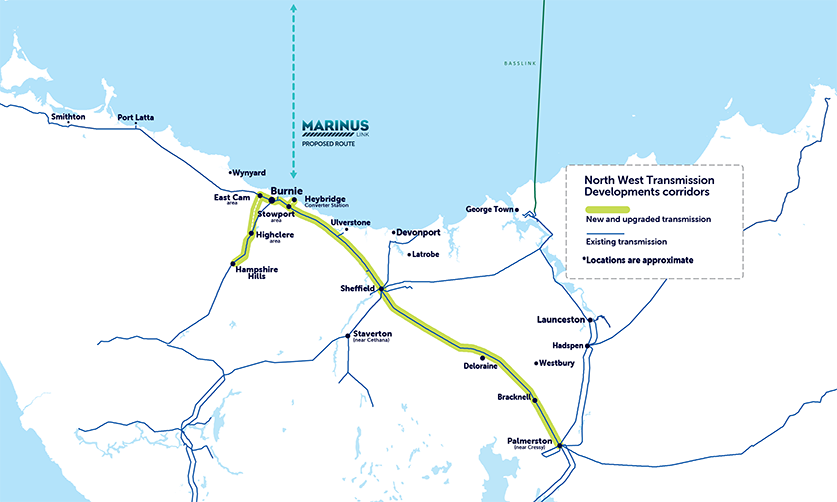Planning and approvals
TasNetworks is committed to understanding the area and environment where our electricity infrastructure is hosted.
Before constructing a major project like the North West Transmission Developments (NWTD), various studies are conducted to understand the existing environment. This information helps to identify ways to avoid, reduce, and manage impacts.
Upcoming lodgement of a Permit Application for the North West Transmission Developments
As part of the environment, planning and heritage approvals process, TasNetworks is preparing to lodge a Permit Application with the Tasmanian Planning Commission (TPC), the responsible planning authority under the Major Infrastructure Development Approvals Act 1999 (MIDAA).
Community drop-in information sessions are being held to share key study findings and details about the planning and approvals process.
| Location | Date and time |
|---|---|
| Bracknell War Memorial Hall (29 Louisa Street) | Wednesday, 9 April, 2pm - 6pm |
| Future Energy Hub (1-3 Spring St, Burnie) | Thursday, 10 April, 2pm - 6pm |
| Sheffield Football and Cricket Club (Spring St) | Friday, 11 April, 2pm - 6pm |
| TasNetworks Deloraine Depot (38 West Goderich St) | Saturday, 12 April, 11am - 2pm |
| Webinar (online) Register your interest for the webinar here | Tuesday 15 April, 12pm - 2pm |
The Permit Application is for the alignment between Palmerston and Burnie, Burnie and Hampshire Hills, and a line between Stowport and Heybridge to connect Marinus Link (refer to map below). The Application also includes modifications to Palmerston and Sheffield substations and a new substation at Hampshire Hills.
What is included in a Permit Application to the Tasmanian Planning Commission?
The criteria contain land use and development standards, similar to what would be contained in a planning scheme. These standards have provisions in relation to noise, impacts on agricultural land, visual amenity and traffic impacts.
The criteria also contain a range of environmental and ecological matters, including Matters of National Environmental Significance.
To address these environmental matters, the permit application includes:
- A description of the existing environment in the project area informed by independent technical studies.
- An assessment of the potential negative and positive impacts the project may have on the environment, including in relation to threatened flora and fauna.
- Proposed measures for avoiding, minimising or mitigating the potential impacts of the project on the environment.
Once the permit application has been assessed by the TPC, it will then provide a report to the Commonwealth Minster for Environment to inform the Minister’s decision whether to approve the project under the EPBC Act or not.
The project assessment criteria for the DA and EIS are available on the TPC website: Planning-Criteria-1-February-2021.PDF
For further information please refer to the NWTD Assessments, approvals, and studies fact sheet
Resources
Assessments, approvals, and studies fact sheetSocial and economic fact sheet
Ecology fact sheet
Land use fact sheet
Noise and vibration fact sheet
Traffic and transport fact sheet
Landscape and visual fact sheet
Please visit our Resource Library for our full list of project resources.
Eagle Nest Surveys
Eagle nest surveys form a vital part of the environmental and social impact assessment for the proposed North West Transmission Developments (NWTD). We carry out aerial inspections to identify wedge-tailed eagle nests and white-bellied sea eagle nests in the vicinity of the proposed NWTD. It is a requirement of the planning criteria and EIS guidance for the NWTD that eagle nest surveys be conducted on an annual basis.
For more information read the Eagle nest survey FAQs.

.png)
